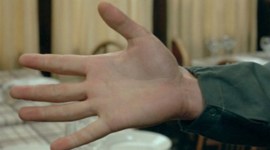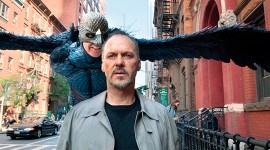
Cutting on the Blink: Editing Tips From Walter Murch
Walter Murch’s work as a film editor and sound designer is vital to the history of cinema and he has some serious wisdom to impart to any film and video maker.
Top Image: Walter Murch on Apocalypse Now via Transom
Walter Murch is a master film editor and sound designer with many famous film credits to his name, including Apocalypse Now, The English Patient, and Jarhead. He’s even directed a movie, Return to Oz.
In his highly regarded book, In the Blink of an Eye, Murch offers film and video makers a wonderfully succinct guide to approaching the craft and philosophy of editing.
Rule of Six
Murch’s “Rule of Six” is a nice hierarchical breakdown to keep in mind when deciding upon where to make a cut, and lists the decision-making factors in this order:
- Emotion (51%)
- Story (23%)
- Rhythm (10%)
- Eye-Trace (7%)
- Two-Dimensional Plane of Screen (5%)
- Three Dimensional Space of Action (4%)
Nikole Hidalgo has made a video to illustrate Murch’s rule:
Murch admits that the percentage assigned to each item on the list is not the thing to fixate upon, even though it does indicate a significant value difference between the two extremes of emotion and screen space. Rather, the order of the items is the key here and the resulting guide is a good editing checklist when in doubt about a crucial edit on your next movie.
 Return to Oz via Disney
Return to Oz via Disney
The Blink
Perhaps more interestingly, Murch has proposed a theory about how the rate, or speed, in which we blink our eyes may actually be suggestive of our mental state and the way in which we are processing information.
According to Murch, to refrain from blinking suggests intense concentration whereas rapid blinking suggests agitation and distraction. There is a middle ground between these two extremes where our blinking coincides with a rhythmic digestion of thoughts and ideas. In other words, the visible evidence of our brain chewing information is through our eyes.
This blinking principle can apply to life and it can also apply to filmmaking. It has seemingly guided Murch’s editing razor over the course of his career as he has searched for rhythm and cinematic truth in countless movie scenes.
 The Conversation via Paramount
The Conversation via Paramount
Murch believes that good actors blink in a way that seems natural to the flow of information within a narrative and the editor can structure cuts and scene rhythms around the way actors blink their eyes.
With this advice, it’s seems advisable to schedule a screen test into your casting process whenever possible. The way an actor blinks may be the window into their ability to be natural and believably emotive in your movie.
Sven Pape has put Murch’s blink technique into direct action in his own editing work, and has even made a video about editing the film Flesh and Blood:
About a decade ago, Transom ran a great article by Walter Murch about his perceptions on sound design. There are some cool examples from his work on Apocalypse Now and THX 1138.
If you’d prefer to hear from the man himself, have a look at this video presentation, where Murch talks about making the right editing choices when putting a film together.
Murch’s wisdom is undeniable, and his thoughtful approach to cinematic endeavors sets an important precedent for film and video makers. One should aspire to Murch’s contemplation of the medium.
Have you employed any of Murch’s suggested techniques in your own work? Has cutting on the blink helped you work your way through a film scene? Please share below.






